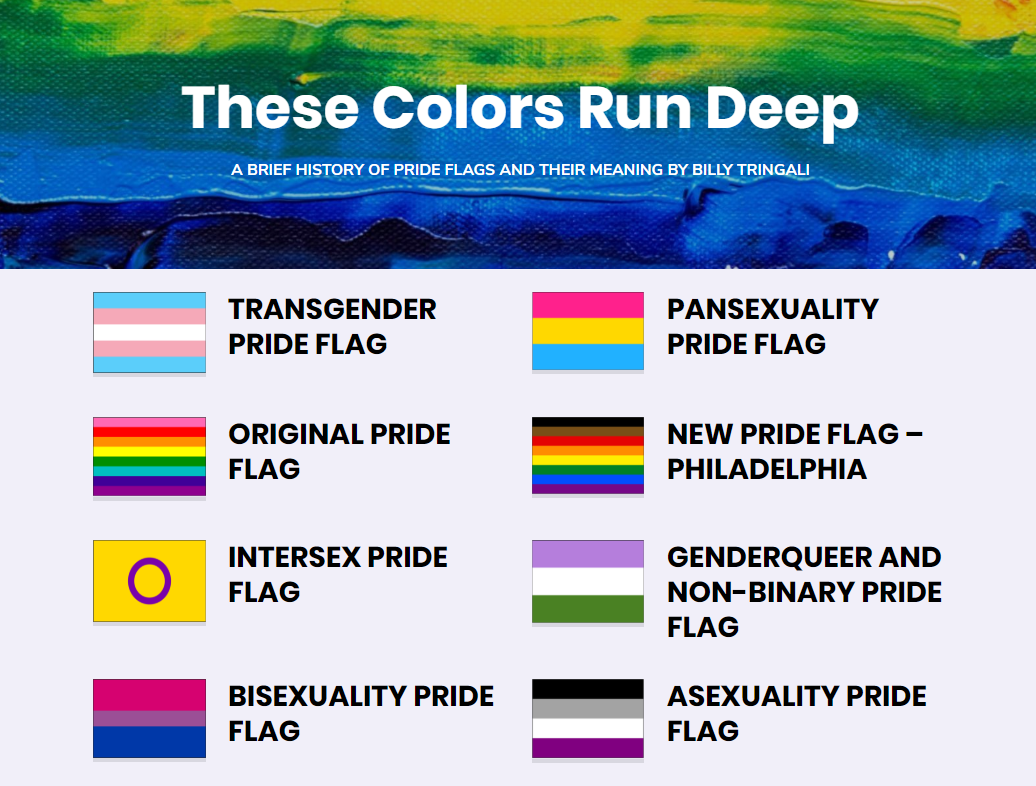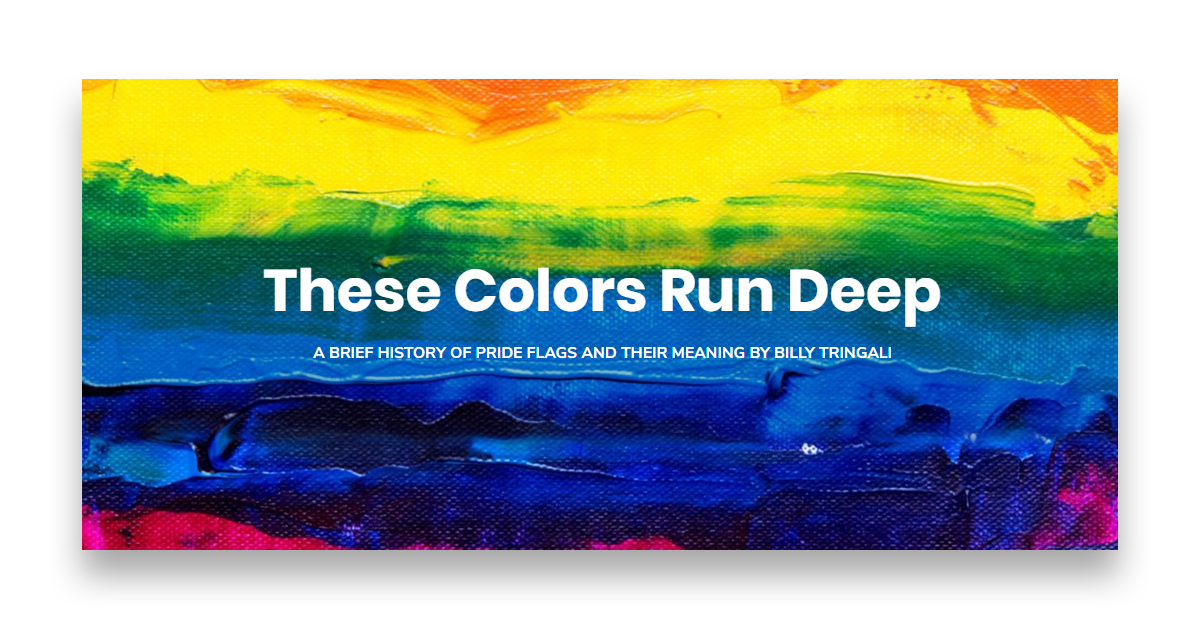The Emory Center for Digital Scholarship (ECDS) recently collaborated with Billy Tringali (Law Librarian for Outreach at Emory University’s Hugh F. MacMillan Law Library) to create an online exhibit that provides brief histories of pride flags and their meanings. The project—initially intended as a physical display but adapted to a digital platform due to COVID-19—has been published online in celebration of Pride Month this June and is entitled: “These Colors Run Deep.”
- Link to the Pride Flags online exhibit: https://scholarblogs.emory.edu/lgbtflags/

The exhibit explains on the About the Project page that LGBTQIA+ history is “a vast, rich, and often overlooked area of history.” The digital display “aims to spark discussion on and inspire interest in queer history” through the use of LGBTQIA+ flags. The website provides a history of the rainbow flag as well as descriptions of other pride flags. These include the original pride flag (featuring a pink stripe), new pride flag (with black and brown stripes added to represent people of color in the LGBTQIA+ community), transgender pride flag, asexuality pride flag, bisexuality pride flag, intersex pride flag, pansexuality pride flag, and genderqueer and non-binary pride flag.
Billy Tringali provides background for why he wanted to create this exhibit:
I was the only openly gay person in my high school’s graduating class, and the only out LGBT person in the school “Gay-Straight Alliance”. I remember one of my proudest moments was purchasing ‘LGBT Safe Zone’ stickers and going around to various departments, handing them out and seeing which teachers put them up. The design was a pink triangle inside a rainbow, and I think seeing these symbols, rainbows, pop up all around the school was the moment I became truly fascinated by the power of the rainbow flag.
Flags can give a sense of identity and belonging. Flags can mark a place as safe for the queer community. Flags make all of these intangible ideas tangible, and that’s what ultimately drew me to this project. I’ve seen so many of these flags—and many more LGBTQIA+ symbols—flying this month, so I was even more inspired to create an easily accessible, well-cited resource that could educate interested LGBTQIA+ persons and allies about the meanings of these colors, and also their unique histories.
I hope that this project can expand to include more flags and LGBTQIA+ symbols in the future.
Dr. Kayla Shipp (Digital Scholarship Specialist at ECDS) collaborated with Billy to create the digital exhibit using the ECDS web platform ScholarBlogs. ScholarBlogs is a multi-site installation of WordPress available to Emory University faculty, students, and staff. To learn more, check out our ECDS Resources Feature blog post about ScholarBlogs.
